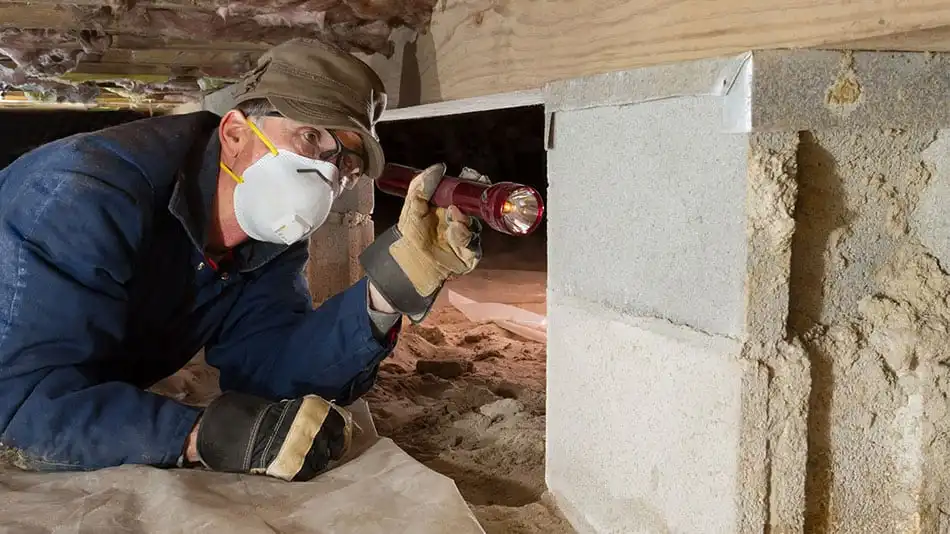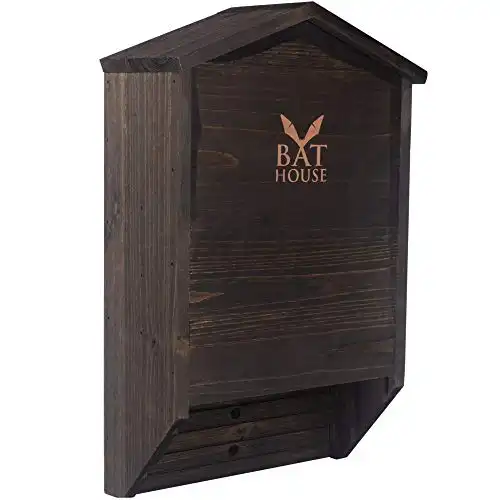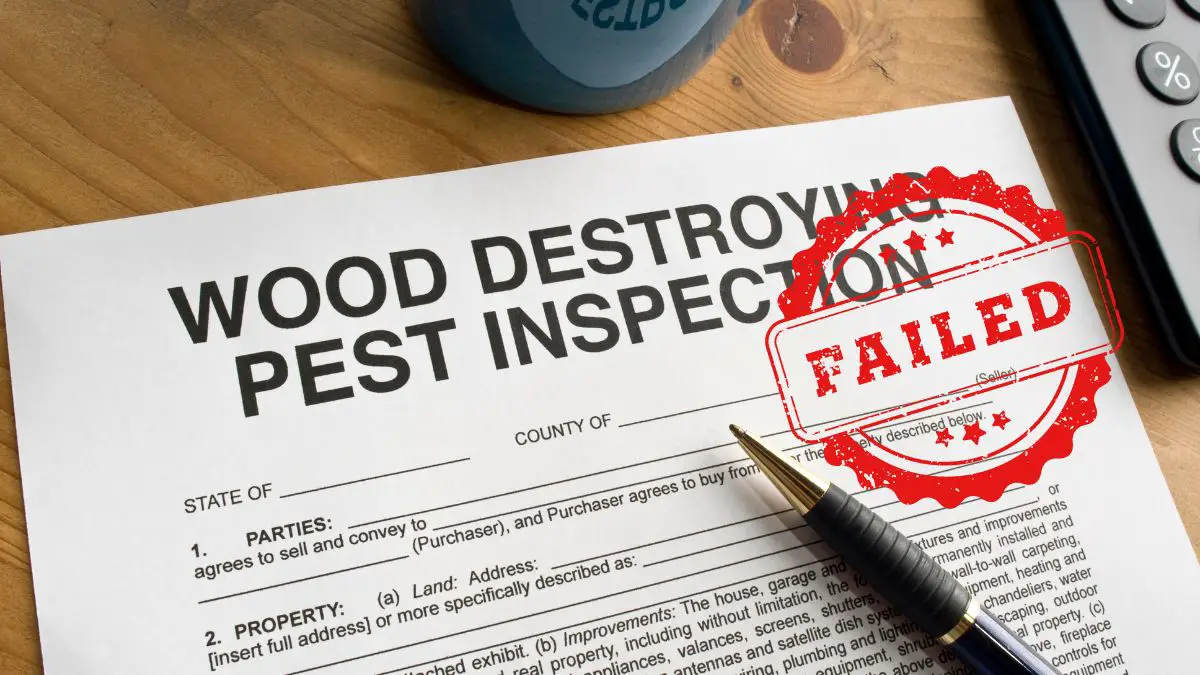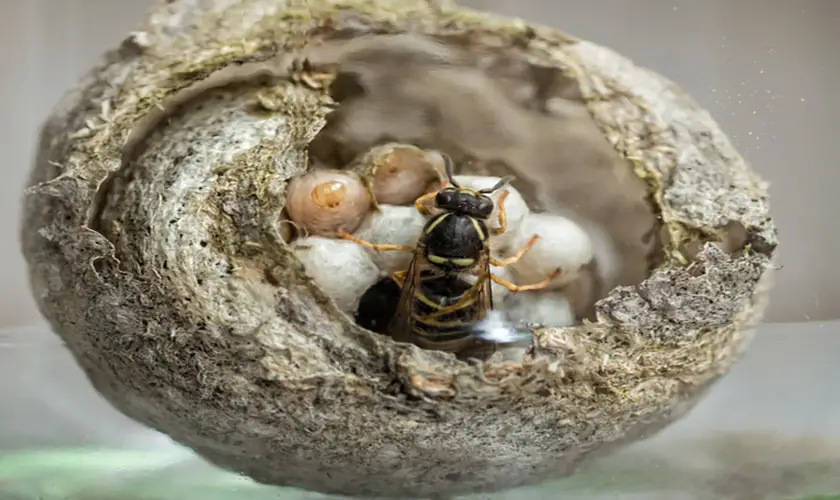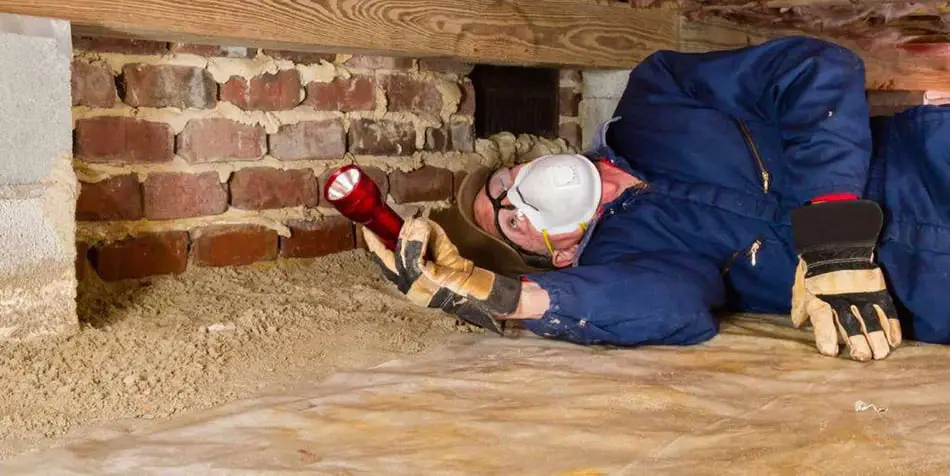
Bats are known for living in and hanging on the roofs of caves. But anywhere that is dark enough for these nocturnal hunters to ride comfortably is enough for them to call home. Even places like the attic of your home or even your porch are good spots for them. But what are some excellent ways to keep bats away from your home?
There are many things you can do to repel bats and keep them from getting comfortable in your home:
- Fixing or sealing up cracks and holes in your ceiling
- Installing a decoy bat house
- Installing bright motion sensor lights
- Using mothballs
- Using natural bat repellent
- Calling a professional
These are just a handful of different ways you can go about keeping bats away from your home.
Get FREE quotes from licensed pest control technicians in your area today. Whether you need spraying for ants, roaches, spiders, ticks, mosquitos, or bed bugs, We Can Help! All technicians are screened, licensed, and insured.
As you continue to read this article, it will go more in-depth with all the above methods and explain many other practices you can use to keep those bats away from you and your family.
What Keeps Bats Away From Your House
While bats play an essential role in the ecosystem by eating many insects that fly around at night, bats pose a serious health risk with the diseases they can carry that are transmittable to humans.
This does include infamous rabies, among others. We will discuss the many methods you can use to keep these flying bats safely away from your home below.

1. Using Natural Bat Repellents
Bat repellent sprays easily prevent bats from roosting and setting up a nest in your home. These repellents are made with synthetic chemicals or all-natural ingredients that bats hate and will go out of their way to get away from them.
One popular bat deterrent is Bonide Bat Magic. This repellent contains peppermint and spearmint essential oils that give off and leave a residual smell that bats hate. The smell assaults their sense of smell, driving them off, hopefully for good.
The instructions for this product are straightforward. All you have to do is place a packet in the general area of your home where you have noticed that the bats have set up a nest in your home.
Once you have set the packet within the hour, the smell will waft up to the bats and drive them off. These packets can cover up to 150 square feet.
Because this product is biodegradable, there are no downsides to setting them up and forgetting where you put them.
This product is best used in the early stages of a bat infestation. At the same time, it will work on small groups of bats that have just started to make a nest in your home. This product alone will most likely not work on bats that have been set up for a decent time and have started to have a family in your home.
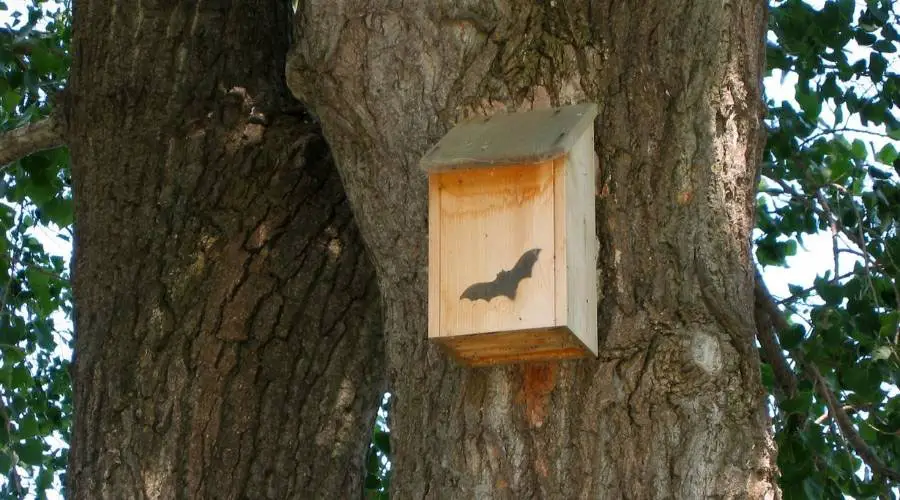
2. Installing A Decoy Bat House
Installing bat decoy houses is an excellent way to keep bats away from the populated areas of your home by providing them with a much better place to set up and call home. These homes are effortless to build and set up while also coming with easy-to-follow instructions and great examples of where to set these decoy homes up.
Remember that bats are superb at controlling the insect population around your home, especially the flying insects. So it may be wiser to set up a decoy home nearby your home instead of repelling the bats completely. If you do, you might notice a drastic increase in insects around your home within the week.
Before buying one of these decoy houses for bats, consider researching and figuring out what kind of bats are around your home. Bats come in many sizes, and these decoy homes are not one size fits all.
Bats are often associated with darkness and the night. While they are nocturnal hunters, their homes should be in the sunlight for at least 6 to 8 hours a day. This period in the sun is mainly to keep their home nice and warm.
When setting up a decoy home for bats, consider installing a fairly tall concrete or wooden post out in the open rather than on a tree. This will help keep the bats’ home away from predators, letting them roost safely and keep the bug population down around your home.

3. Installing Bright Motion Sensor Lights
As we have previously said, bats are more comfortable hunting at night. Research has concluded that this is mainly because of 2 reasons. Fewer birds compete for food, and naturally, fewer predators around at night.
With that in mind, when bats are done eating and start getting exhausted, it would be pretty annoying to come back to your nest to be blasted with bright light.
A great way to rout a bat infestation is by setting up motion sensor lights in the areas where bats have started to set up a nest in or around your home. As their name implies, the lights will kick on whenever they detect a decent amount of movement.
You can get some motion sensor lights with a susceptible sensor that will turn on with the slightest movement.
These lights annoy any bat that tries to set up a nest and roost, driving them away effortlessly.

4. Using Mothballs
You might be surprised that mothballs, a standard item for storing your items, so they do not get damaged by bugs, are very effective for repelling bats.
Mothballs are essentially made with naphthalene as a primary ingredient. Their construction makes the naphthalene turn from a solid straight to its gaseous form by sublimation.
As the naphthalene turns to gas, it will rise and kill or repel any nearby food sources that bats rely on. Not only that, but the chemical in mothballs will also cause the bats to experience dizziness, nausea, and vomiting.
While mothballs will not hurt the bat outright, they will make them uncomfortable enough to vacate the area after a night or two of experiencing these symptoms.
Mothballs are best used for small areas. However, you can use up to 5 pounds of naphthalene per 2000 cubic feet of room you wish to vacate.
This is usually good for clearing bats out of your attic. While mothballs are excellent at repelling bats, once the chemical has run dry, it is likely for the bats to return if you do not take other preventative measures to keep them out of your home.
While using mothballs in large quantities, the fumes can be dangerous if you inhale them too much. If you need to use them in large amounts for whatever reason you need them for, advise your family to stay out of that area if possible, and if they need to go into it, do it quickly.
The best place to place mothballs is in high areas out of reach of animals and children. Mothballs are an excellent repellent for many pests, but they are toxic if ingested in any amounts.
5. Fixing or Sealing Up Cracks in Your Roof & Ceiling
It is widely known that bats like to take up residence in caves or other dark places in the wild to help keep them safe during the day. However, any reasonably dark place to hang from can be called home if there is no better place nearby. That said, having small holes in your ceiling, roof, or even decent-sized eaves are perfect places for bats to fly or crawl into to call home.
Sealing cracks and holes are probably the best way to prevent a bat infestation in your home. However, please be sure that there are no bats already in your home or in the areas you are about to seal up, as removing them afterward will be much more difficult.
Professionals typically use and recommend steel wool or a copper mesh to seal up cracks and crevasses. This is mainly because of their malleable material, which can easily fit into most areas and have a long-lasting effect.
The material is also great at being stain and rust-proof while preventing other pests from trying to chew through it.
After stuffing the holes and cracks around your home with the two above, seal off the rest of the cracks and holes with caulk or expanding foam. Pur Black foam is extremely popular with pest control professionals.
It comes in a can that requires a foam gun to be used effectively. While using this product, please take proper safety precautions and use reliable air ventilation as the product can be harmful if inhaled. After patiently waiting a few hours, the pure black foam will harden and seal off the rest of the crack completely.
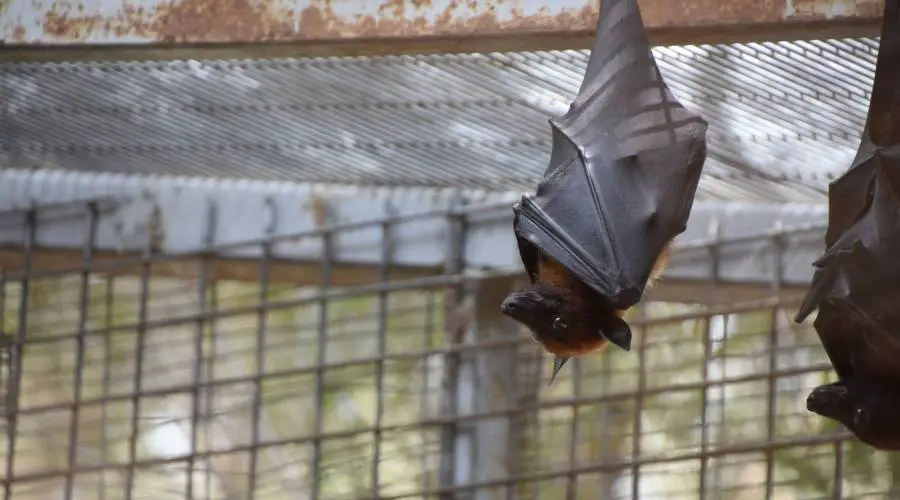
6. Properly Using A Bat Cone As A Bat Trap & Deterrent
If you happen to have bats already nesting in your attic or cracks in your wall or roof, it is tough to ensure that all of the bats have vacated the area before starting the sealing process we talked about above.
That is where the bat cone comes in. A bat cone will allow any bats inside to quickly leave their nest, making it nearly impossible for bats to enter from that entrance. Many professionals claim this is one of the best ways to get rid of bats.
Bats tend to form a family-like bond with their group and travel and nest together at all times. This exclusion process will cause the bats left inside their nest, where you have set up a bat cone, to search for their family.
These bat cones are typically made of very tough plastic in the shape of a square tube. This tube will be nailed into the base of the bats’ opening, customarily used to get into your home.
Tip when using these to point the tube towards the ground. Tipping it downward will make it much harder for bats to re-enter your home through that entrance.
As the bats fly out to feed at night, they leave through the bat cone. When they return to roost, they will find their home much harder. For the next few days, you might notice that the bats have started congregating around the cone to find a way back inside.
Eventually, the bats will realize that their previous home is no longer a viable option for them, causing them to leave in search of another home. Possibly a decoy home that you have decided to set up.
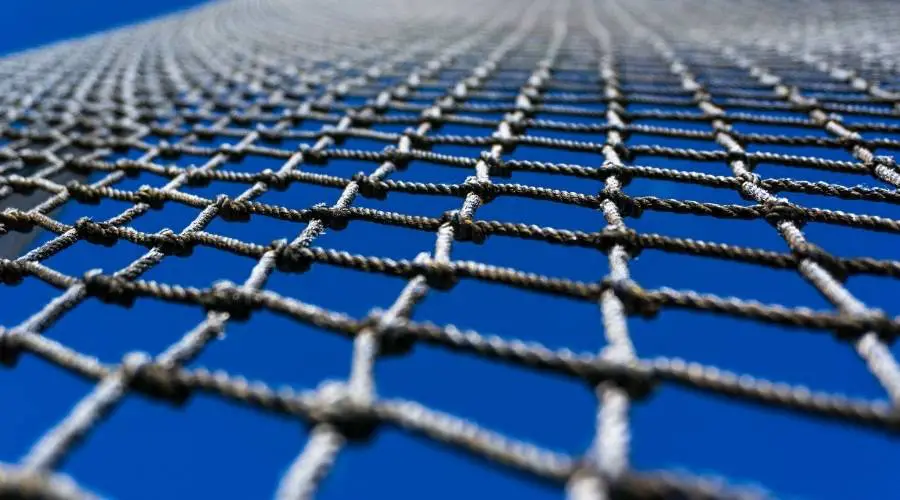
7. Installing Bat Nets Around Your Home
Bat nets are typically used in the same way bat cones are. While bat cones are used for single smaller entrances into your home, you use a bat net to cover larger holes and even several small holes close to one another.
When considering using a bat net, take the time to observe the bat activity around your home. Locate the large or multiple small holes the bats use to fly in and out of your home.
During the daytime, measure the hole and cut the bat net to cover the hole entirely while allowing it to have a decent amount of slack at the bottom of the hole.
Nail the net two to three inches above the hole or holes you wish to cover. As night comes, the bats can fly through the net, but when they return, it will be much more difficult for them to enter because of the extra slack you left.
A popular bat net that professionals use is called StealthNet Bat Net. This brand of bat netting is made of processed monofilament polyethylene that is UV-resistant. Because of the material this bat net has been made of, it can withstand quite a bit of punishment before it even begins to show signs of tearing or breaking.
Although it is relatively rare, bats can get stuck in the nets. Call a professional to come out and release the bat from the netting if this happens. Attempting to remove the bat yourself may cause the bat to bite or scratch you. This can cause the bat to transfer several diseases that the bat may be carrying, including rabies.
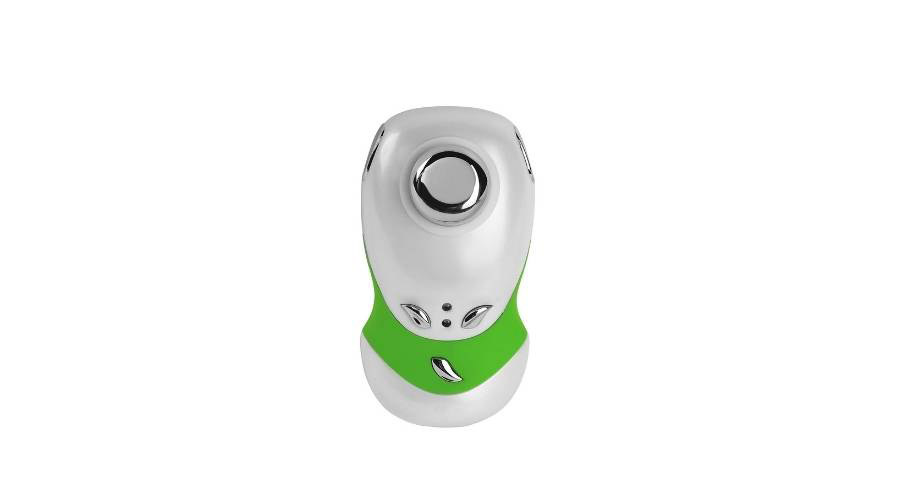
8. Installing Ultrasonic Pest Repellants
Bats have a horrible sense of sight, so when they hunt at night, they use their large ears and the sound they emit to find prey. This makes their sense of hearing very strong. Taking this into account, we can use that to our advantage when trying to repel and deter them from your home.
Just like motion-activated lights, you can install motion-activated sound devices. There are also options on the market that will emit sound often instead of waiting for movement.
Depending on the product you choose to purchase and install, you can have an effect that will emit a loud noise every so often that will spook the bats, making them fly off. However, while this product will effectively repel bats, you might also find that this noise can annoy you and your family after some time.
Another type of pest repellent you can use will emit an ultrasonic sound instead of just a loud noise. The sound that this emitter will produce will be more audible and slightly higher than the sounds that bats make—making it only heard by bats themselves and not the home’s occupants. The sound will still startle and drive the bats off.

9. Removing Sources Of Food From Your Garden Or Yard
The ideal home for bats, or any animal for that matter, is a reliable place to take shelter from the elements and potential predators while providing a nearby source of food and water. If you are having a tough time getting bats to stop nesting in or near your home, your home likely has everything they need.
Knowing what bat species you are dealing with is vital to know just what they need to survive. Some bat species eat bugs, others only eat fruit, while very few can stay by sipping on nectar. However, most bat species survive on a mix of everything previously listed.
The most common bat attractant is the presence of a steady supply of insects. This includes beetles, moths, and, most importantly, mosquitos. It is common for households with a mosquito problem also to have a bat problem.
Getting rid of the mosquito issue will most likely help eliminate the bats populating your property while also helping your family stay safe from potential mosquito-borne illnesses.
Using insecticide is most likely the go-to when dealing with mosquitos. However, if you have a bat problem that you need to solve, find an insecticide that is not toxic to animals to keep the bats safe from harm.
If you are growing fruits, be aware that most bats do not care what type of fruit they are feasting on. To prevent bats from getting to your fruits, consider using bird netting to cover the plants, making it much harder for bats to feast.
With that in mind, if you have a hard time with bats in your area, consider the types of flowers you are growing. If they are nectar-bearing flowers, it might be a good time to reconsider those and grow other flowers instead.

10. Using Essential Oils To Make A DIY Bat Repellent
If you have noticed a few bats now and then flying around your home, there is a method that you can use to prevent them from getting comfortable. This do-it-yourself essential oil solution is only good as a preventative measure rather than using it as a repellent.
Bats have a sense of smell that is much stronger than humans and, in some species, even more, potent than some breeds of dogs. There are a few essential oils that you can use to make a mixture that will help you prevent bats from nesting in your home. Among the more popular oils you can use are; clove, peppermint, cinnamon, mint, and eucalyptus.
Try taking any of these oils and mixing a couple of drops into a spray bottle full of hot water and about a half cup of sugar. You can use one or a mixture of these oils. Once everything is in the bottle, close it off and shake it vigorously until the contents inside dissolve into the water.
Take your concoction and spray in areas you have seen bats starting to take root. Spray those areas until it is visibly damp but not soaking wet. As your DIY solution starts to dry, the sugar will remain and stick to the surface where you sprayed, and the oils will stay in the now dried stuck sugar for some time until their smell completely evaporates.
While this method is not guaranteed, it can help deter bats from making a nest. The smell will waft for a few days until it is depleted. Once you have noticed that the scent is starting to finish, respray the area until you are comfortable enough that the bats will not try and take roost in or around your home.

11. Spraying Phenol In Areas Where You Have Seen Bats Roost
Phenol is an excellent chemical most commonly used to sterilize and disinfect medical equipment. While the smell can be pretty sweet and pleasant to people, this smell is quite unbearable and very strong to bats.
As previously stated in other steps, bats have an incredible sense of smell. So, DIY repellent, manufactured bat repellent, or phenol are great ways to help prevent those bats from getting comfortable in your home.
Phenol can come in two forms, most commonly in spray cans, but some phenol forms are in a crystal form. While the spray form of phenol is a lot easier to use, the main downside to this form is that the smell will not stick around for long periods. However, the crystalized version of phenol is a much better option when dealing with a nest of bats.
The crystal form of phenol is best used in areas where you can quickly put a pile or a line of the crystalline phenol. Because it is in a solid state, the phenol will last long and emit its smell over more extended periods. Once you have put down the crystals, the scent will permeate throughout the roosting area for several days before needing to be replaced.
When using phenol to repel nesting bats, it is advised that you use protective gloves and possibly a face mask, depending on the phenol concentration. This is mainly because phenol can penetrate the skin rapidly and cause uncomfortable skin irritation.
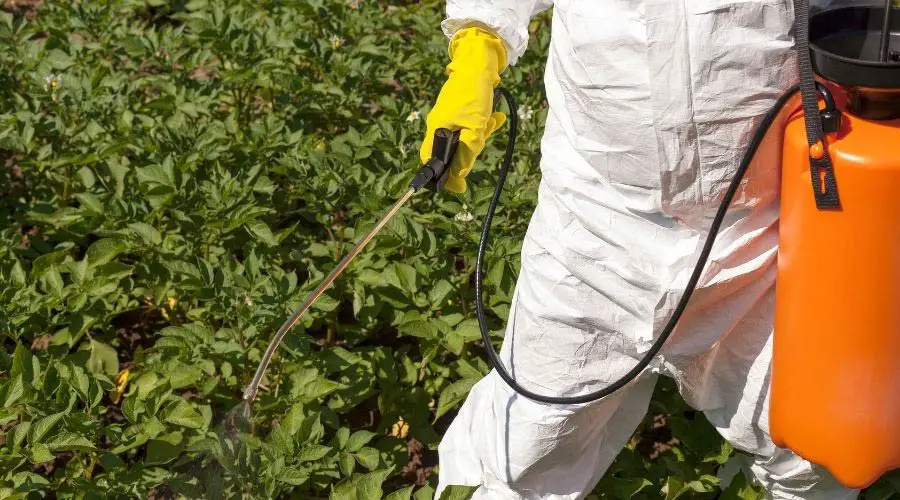
12. Calling A Professional
As with all home-invading pests, calling and paying a professional to come out and deal with your bat infestation or whatever else might be invading your home will always be the easiest option for you to do.
There are plenty of cases where a colony of bats has either gone unnoticed or allowed to dwell for so long that the infestation is nearly impossible for the average homeowner to deal with. In cases like these, or even in tamer situations, a professional is needed to clear your home of bats.
Professionals will have the equipment and the expert knowledge needed to get rid of these large colonies of bats. This will undoubtedly be the most expensive form of bat repellent and deterrent, but knowing that they will handle the issue to its fullest will be worth the cost.
During this process, the professionals will inspect your home, ask you a couple of questions about the infestation, and use everything they gathered to make a perfect plan for that situation. With this plan, the professionals will use many methods to eliminate the bat infestation. Some of which are even on this list.
Final Thoughts
Bats are essential to the ecosystem and eat tons of bugs that their population would run rampant with, the bats keeping them in check. While bats can make great neighbors, they do not make good roommates.
Bats can carry many illnesses and diseases that are transferable to humans and their pets, including rabies. Hopefully, the information provided above has given you precisely what you need to rout the bat infestation you are experiencing.
Get FREE quotes from licensed pest control technicians in your area today. Whether you need spraying for ants, roaches, spiders, ticks, mosquitos, or bed bugs, We Can Help! All technicians are screened, licensed, and insured.


